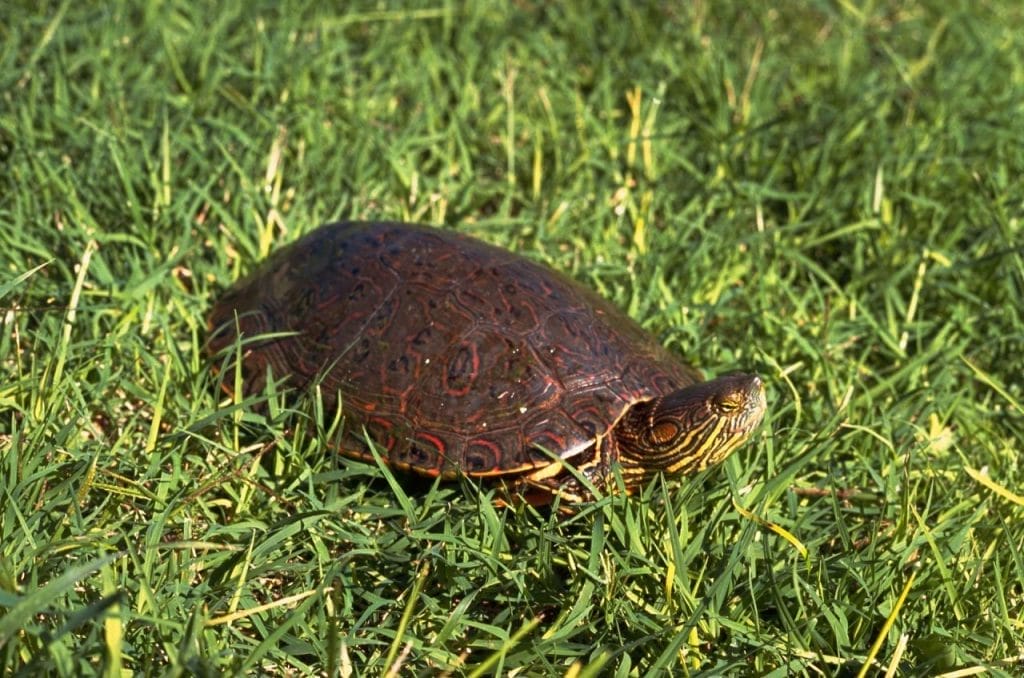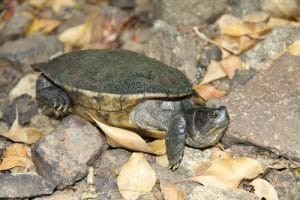Trachemys gaigeae (Big Bend Slider)
Home > Turtle Database > Trachemys gaigeae (Big Bend Slider)

The Big Bend Slider (Trachemys gaigeae) is a freshwater turtle found in the southwestern United States and northern Mexico. It is closely related to the more common Red-eared Slider but is native to a limited range and shows some unique features.
Native Turtle Species Map – Find Turtles by Region
Scientific Classification
Kingdom: Animalia
Phylum: Chordata
Class: Reptilia
Order: Testudines
Family: Emydidae
Genus: Trachemys
Species: Trachemys gaigeae
Common Names
Big Bend Slider
Mexican Plateau Slider
This Hilarious Turtle Book Might Know Your Pet Better Than You Do
Let’s be real—most turtle care guides feel like reading a textbook written by a sleep-deprived zookeeper.
This one’s not that.
Told from the snarky point of view of a grumpy, judgmental turtle, 21 Turtle Truths You’ll Never Read in a Care Guide is packed with sarcasm, sass, and surprisingly useful insights.
And hey—you don’t have to commit to the whole thing just yet.
Grab 2 free truths from the ebook and get a taste of what your turtle really thinks about your setup, your food choices, and that weird plastic palm tree.
It’s funny, it’s honest, and if you’ve ever owned a turtle who glares at you like you’re the problem—you’ll feel seen.
Identification
Description
This turtle has an olive to dark green carapace with faint yellow striping and a slightly keeled top. The skin is usually dark with yellow striping, and the most distinct mark is a yellow spot or crescent behind each eye, instead of a red one like the Red-eared Slider.
Sexual Dimorphism
Males are smaller than females and have longer claws on their front feet. Their tails are also longer and thicker.
Check more turtles from the Trachemys genus
Native Origin and Distribution
Geographical Range
Found mainly in the Big Bend region of Texas and in parts of northern Mexico, especially in the Río Conchos and Río Grande drainage systems.
Preferred Habitat
They prefer slow-moving or still freshwater bodies such as rivers, streams, ponds, and reservoirs. Areas with basking spots like logs or rocks and muddy bottoms are ideal for them.
Behavior
Feeding Habits
They are omnivores. Young ones eat more animal matter like insects, snails, and fish, while adults consume more plants, algae, and aquatic vegetation.
Predators
Eggs and hatchlings are preyed on by raccoons, birds, and fish. Adults are less vulnerable but can still fall prey to large birds of prey or humans.
Reproduction
Breeding Season
Mating usually occurs in spring and early summer.
Reproductive Method
Females lay 5–15 eggs per clutch in sandy or loose soil. They may lay multiple clutches during the season. Incubation lasts about 2–3 months.
Conservation
Extinction Status
Vulnerable
Threats
Habitat destruction, pollution, competition with introduced species like Red-eared Sliders, and water diversion are major issues.
Conservation Measures
Protected in parts of its range. Some conservation groups monitor populations and promote habitat protection to maintain water quality and nesting areas.
Economic Importance
Not widely used in trade but sometimes collected as pets. Their role in ecosystems, such as controlling insects and algae, can benefit local water bodies.
Interesting Facts
The species was named after Helen Gaige, a herpetologist.
It is sometimes confused with Red-eared Sliders due to similar appearance, but its range and head markings set it apart.
These turtles are strong swimmers and excellent baskers, often seen piled on top of each other on sunny logs.

About Author
Muntaseer Rahman started keeping pet turtles back in 2013. He also owns the largest Turtle & Tortoise Facebook community in Bangladesh. These days he is mostly active on Facebook.














